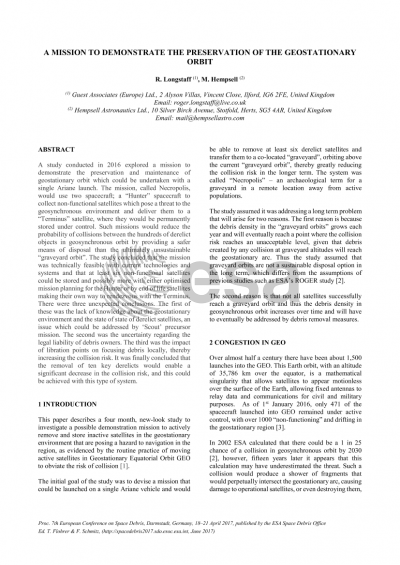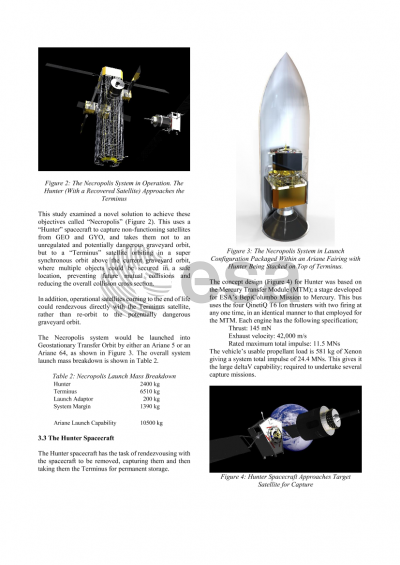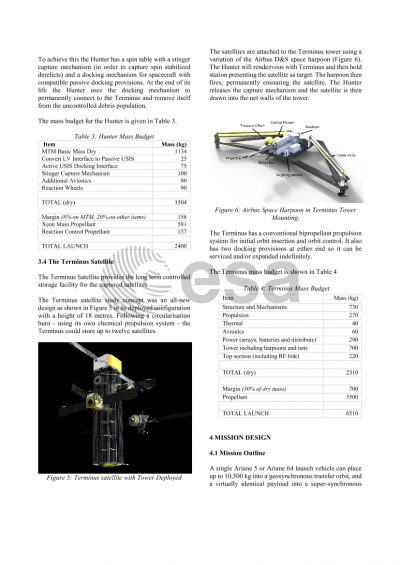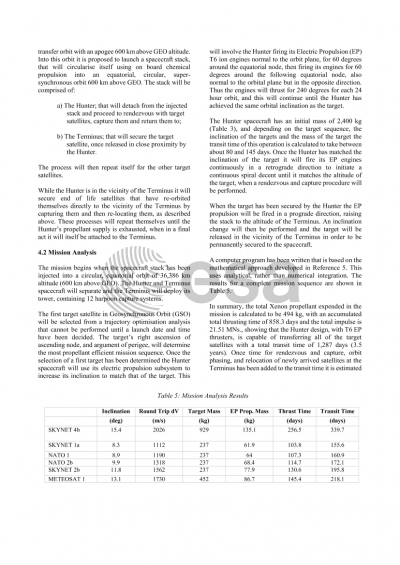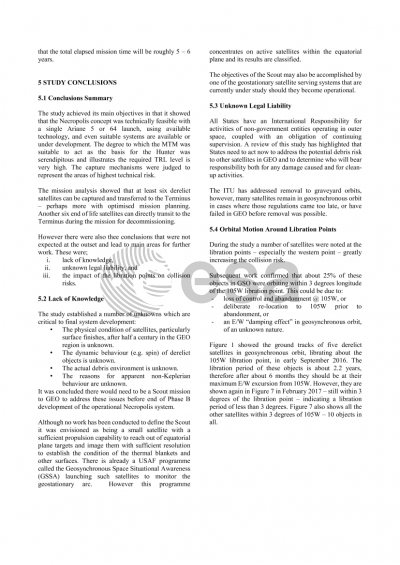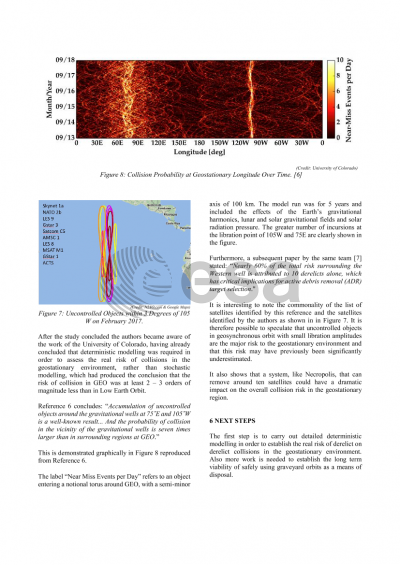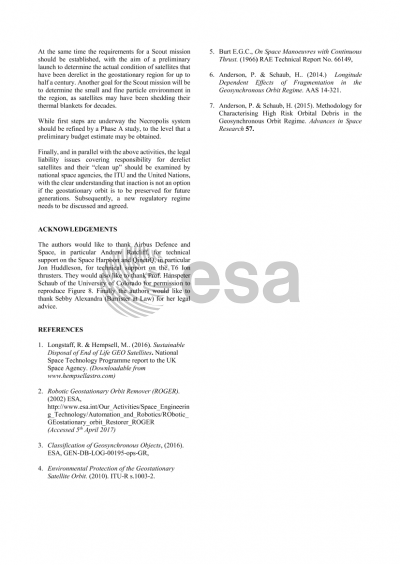Document details

Abstract
The paper - jointly funded by the UK Space Agency - describes the threat to the existence of the geostationary orbit, and a mission to demonstrate the preservation and maintenance of this unique and valuable orbit, which could be undertaken with a single Ariane 5 or 64 launch. The mission, called Necropolis, would use two spacecraft; a “Hunter” spacecraft to collect non-functional satellites in geosynchronous orbit and deliver them to a “Terminus” satellite, in super synchronous orbit, where they would not be a hazard to navigation. Such missions would reduce the probability of collisions between the hundreds of derelict satellites in geosynchronous orbit, release “slots” for new satellites and provide a safer disposal for non-functional satellites than the currently unregulated (and ultimately unsustainable) “graveyard orbit”. In addition, satellites coming to the end of their lives could be directly re-orbited to the Terminus spacecraft, resulting in a more sustainable disposal strategy. At least 6 long-non-functional satellites – including UK and ESA owned satellites – could be deposited of to a safe location, and also 6 satellites that naturally came to the end of their lives during the mission could be safely disposed of at the same location. The paper describes how the Hunter spacecraft could be based in large part on the BepiColumbo Mercury Transfer Module. The paper also describes a precursor mission called “Scout” to reduce the uncertainties in the position and condition of non-functioning satellites and to validate some of the Hunter’s technologies and mission design. This would be a small satellite, using electric propulsion, which moves between geostationary and graveyard obits visiting potential target satellites.
Preview
